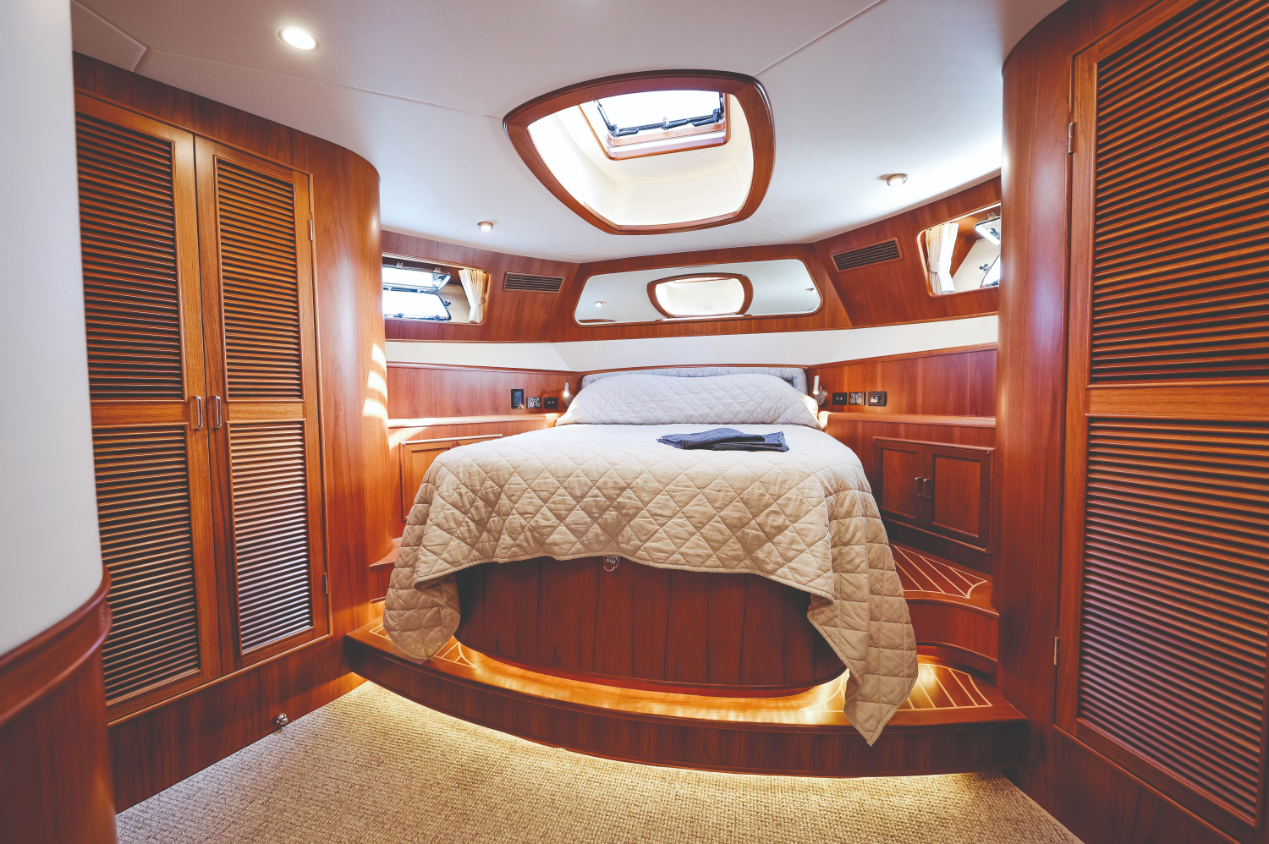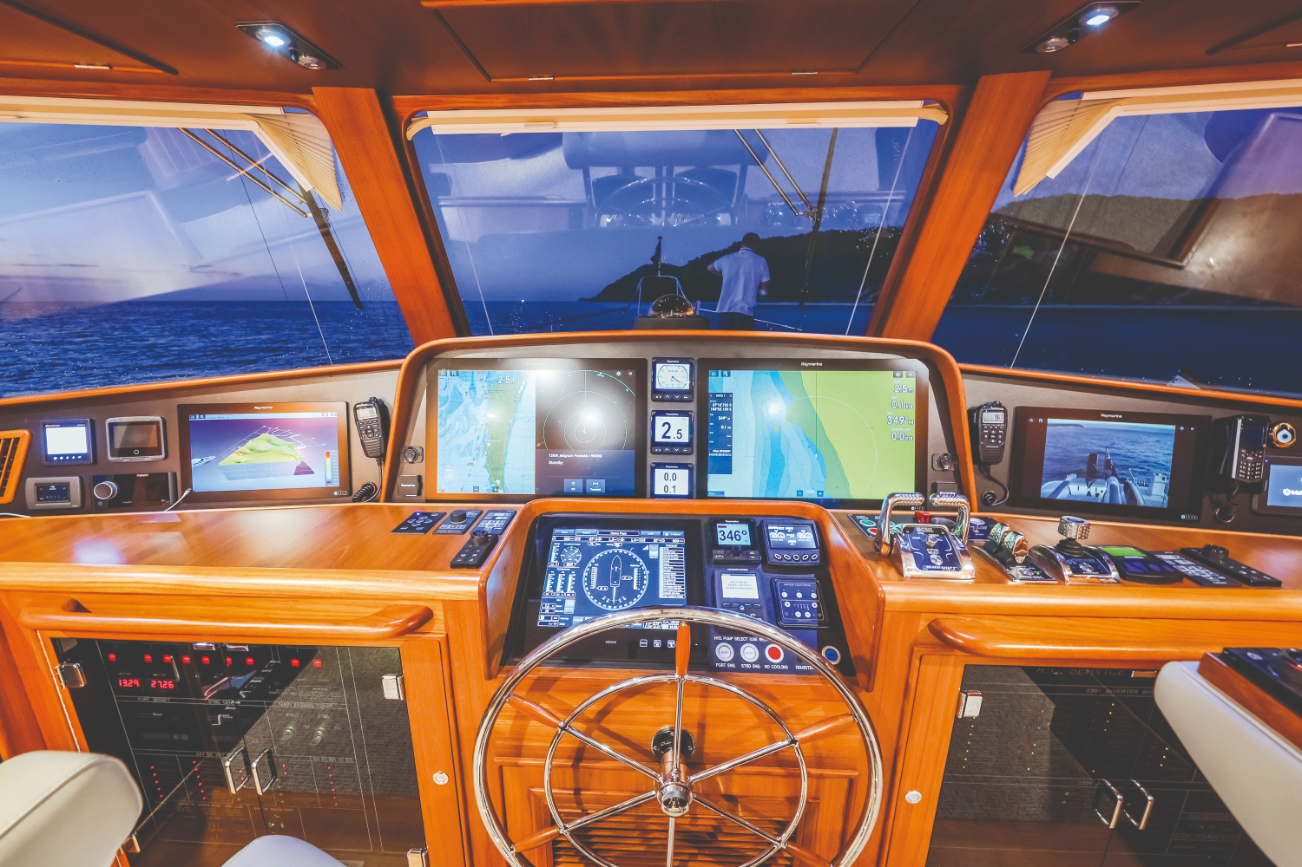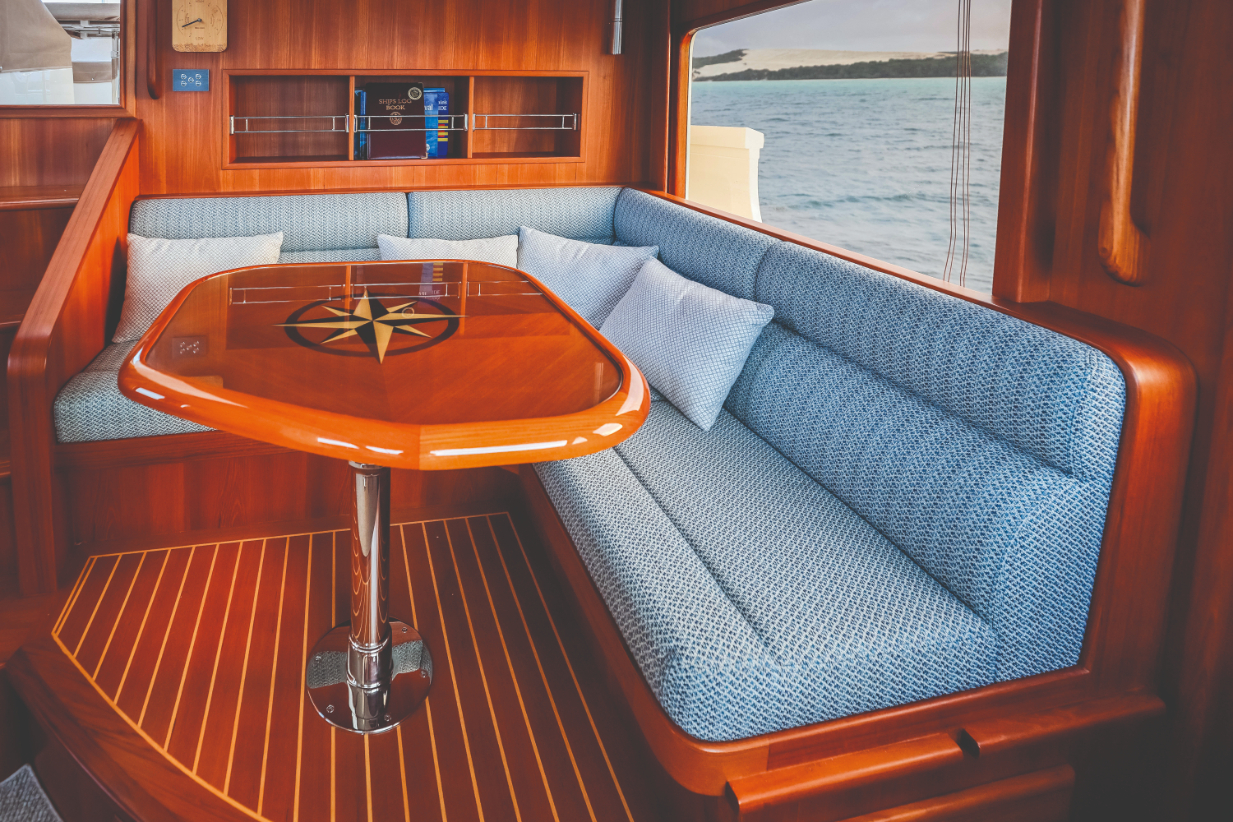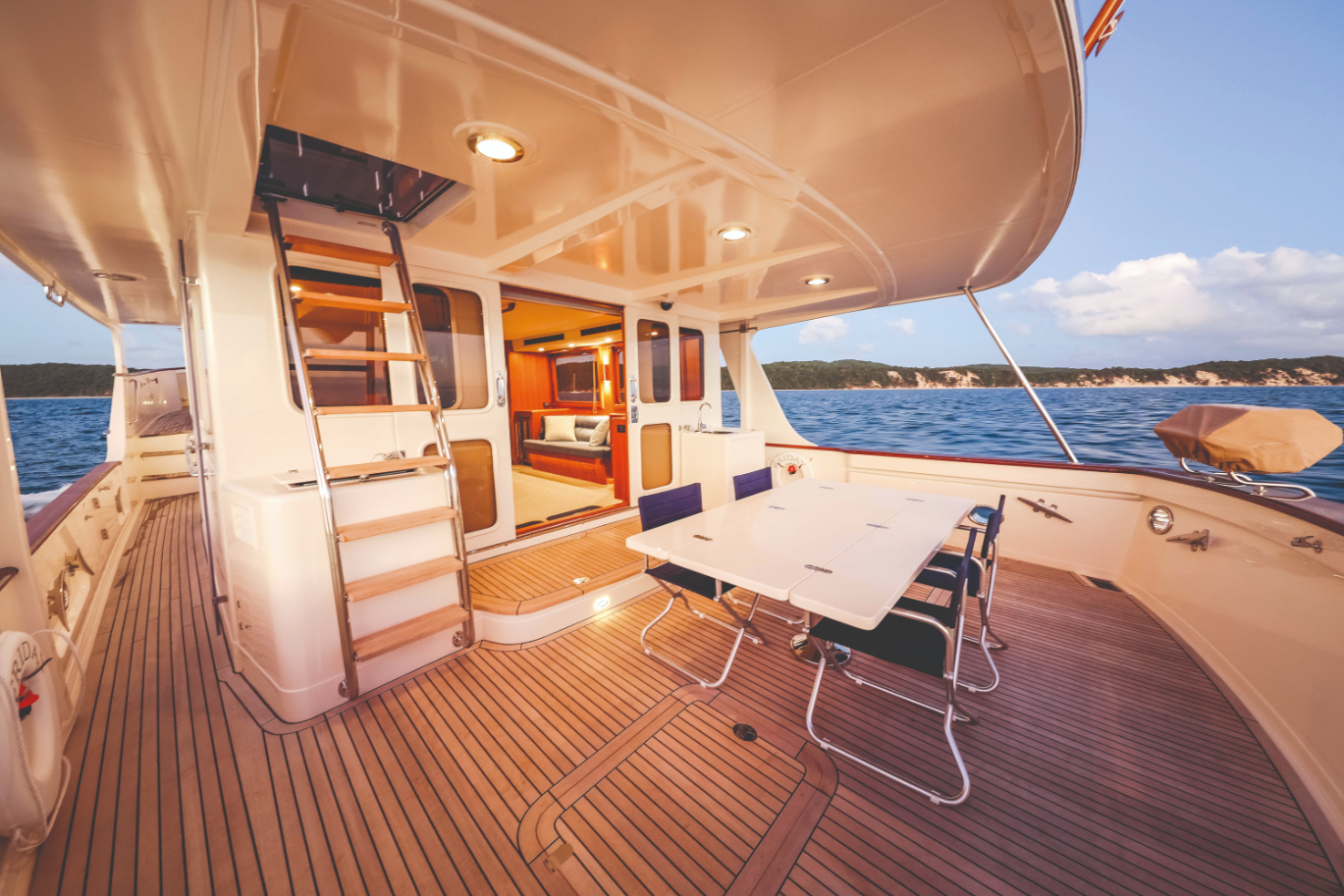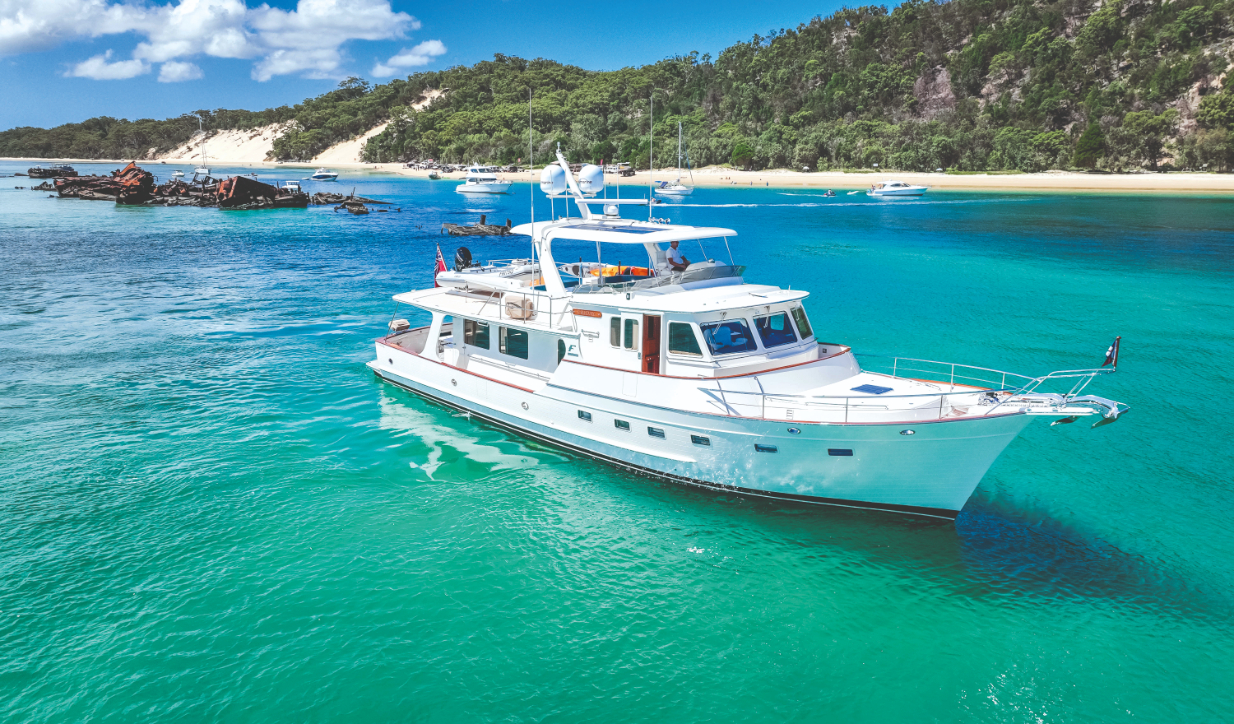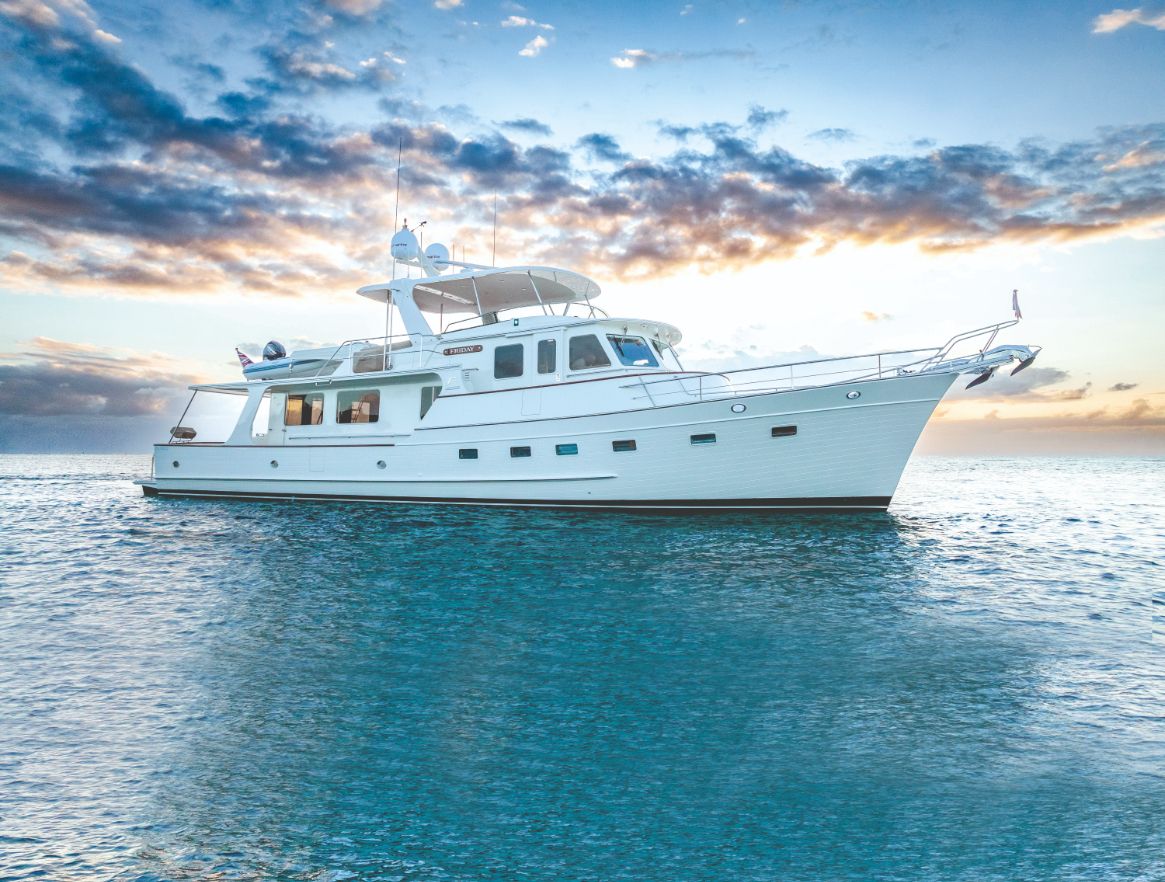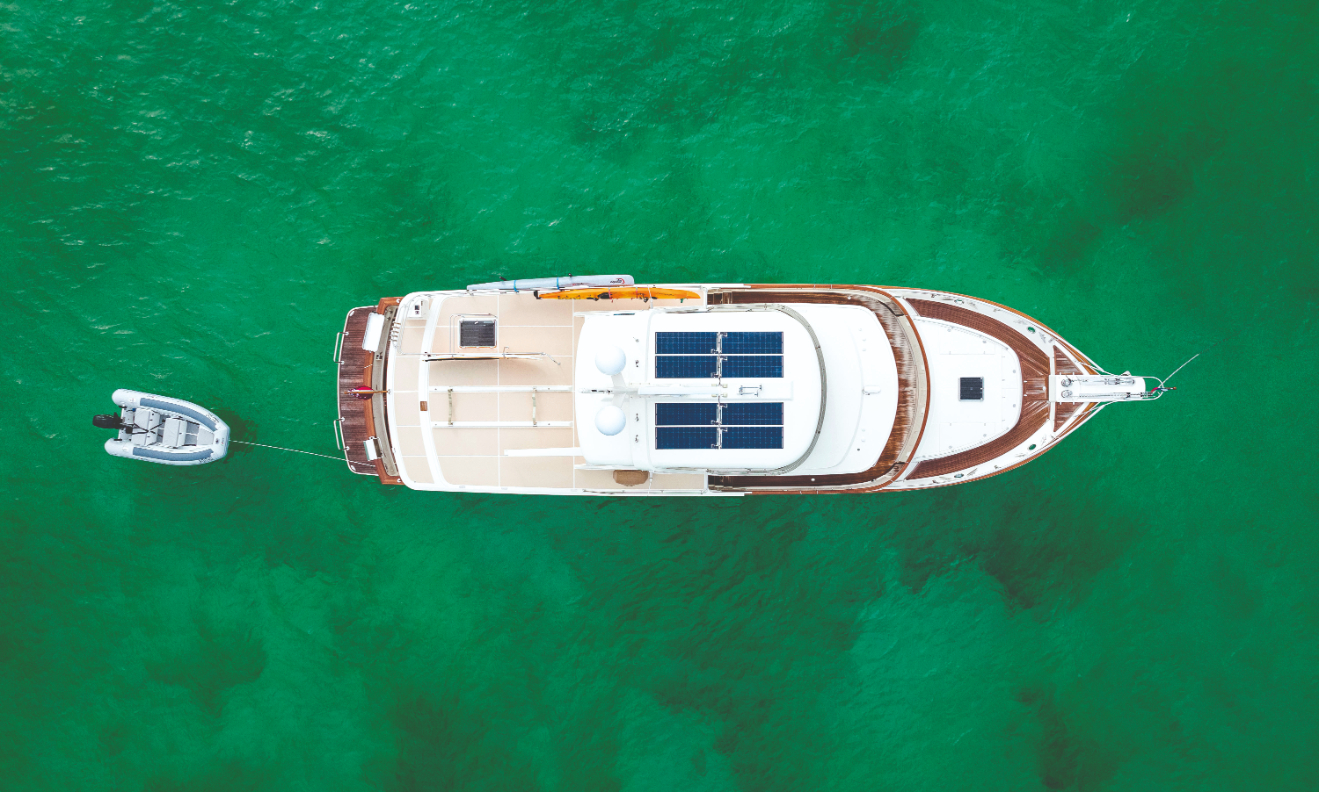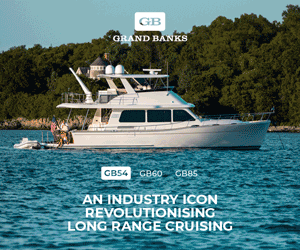Modern traditions
Much fuss has been made recently of the fashionable category of large yacht, the expedition vessel. And yet, Fleming Yachts has been building understated versions of these go-anywhere boats for more than 30 years.
Written by Kevin Green
Photography by Salty Dingo
30 August 2022
I use the word understated because, as their design dictates, these trawler vessels are more utilitarian than fashionable – and what they lack in speed, they more than make up for as an all-weather vessel.
This may not win them many votes along the French Riviera, but no matter – it is at sea where they excel.
Indeed, it is also the reason founder Tony Fleming built the original 50 in 1986. The former Grand Banks technical director saw a clear gap in the market for a sturdy, long-range cruiser.
As he explains, “Our mission statement 30 years ago was to build the best boat we know how, and that resolve remains unchanged,” said Fleming.
It also means these boats require many work hours and extremely sturdy fabrication, which does not come cheap. From that first mould came their most popular trawler, the 55, which numbered around 100 by the year 2000 when the Fleming 75 launched.
By 2005, the 65 was on the drawing board for Tony Fleming’s own use as that size gives an ideal load-carrying hull for exploration and long-range cruising. A 58 and a 78 have also joined that fleet.
The success of the Fleming 65 sat before me on the dock in Manly, Brisbane, in the form of hull #56 – a number that clearly attests to the popularity of these Taiwan-built vessels.
There are now four Fleming 65s in Australia; the rest are 55s plus two 58s. Occasionally, one is quickly snapped up on the used market by discerning buyers who want to explore our vast and remote coastlines, something these self-contained trawler yachts are built for.
This latest hull caught my attention because it was the first to use Humphree external stabilisers, something I’d only seen on much larger yachts.
As we walk through #56, my host for the day, dealer Sam Nicholas, explains: “Each Fleming is built to order, so every one is different. For instance, this hull has extensive custom teak furnishing in the main saloon.”
Customisation apart, what all Flemings share is a strong aesthetic. Images of the fleet show similar profiles of sweeping sheer lines, fine bows and raked superstructure.
However, there’s a significant difference between the 55 and 65 – 53.4-percent more displacement, to be precise.
This is reflected in the much-increased interior space, which I remember from walking through a 55 at the Sydney International Boat Show a while ago.
Stepping onto the 65 is easily done via a large teak swim platform and door through the tall transom centre.
Outside, the Queensland rain fell heavily, but I remained dry in the aft cockpit due to the custom extended flybridge roof and shade cloth. A wet bar and small table leaves plenty of room for socialising or preparing your sub-aqua gear.
Typical trawler features were revealed as I walked along the side decks. Waist-high hull bulwarks with boarding doors and stainless rails inboard offered total support when I stepped up to the foredeck.
Perspex wing doors can be closed on each side deck, shielding the aft cockpit, and scupper-hawse pipes remove deck water. Further protection comes from a Portuguese bridge deck, a safe outdoor passageway across the boat.
On the foredeck, four large, deep lockers are ample for equipment. Anchoring is great via two windlasses – one electric, the other hydraulic, with stainless rode and Ultra anchors. Also impressive is the double set of cleats and large diameter hawse pipes for dock lines.
The owner of this 65 chose an open-plan saloon – there were benches on each side at the rear with an elevating table and no bulkhead at the forward U-shaped galley.
Having previously owned a Fleming 55 for ten years, the owner had some firm ideas, including removing the bulkhead with overhead cupboards and bookcase.
However, the signature ceiling handrail for moving about safely in a seaway was retained. Further airiness came from the large rectangular windows, allowing light without direct sun.
Generous catering facilities included a double-door, household-style Fisher & Paykel fridge, large twin sinks, four-plate electric hob and oven.
Quality details included drawers locked shut on lips, sturdy fiddles and manual overrides. Wing screens show camera angles, which is essential for seeing astern.
There’s a second helm on the flybridge, reached via stairs nearby, and yet another aft on the flybridge that we used to back into our berth after returning from Moreton Bay.
The flybridge forward section is covered by a fibreglass top, which is the ideal protection against the fierce Aussie sun while also enclosing the lounge dining area and surrounding bench seating.
The aft section is for sunbathing and dinghy storage via a hefty davit. Another hatch here gives access to the aft cockpit via a ladder.
Being a serious all-weather vessel, the helm is fairly well protected with a surrounding clear spray screen that retains the alfresco feel while giving commanding views for navigating shoal waters.
Below decks, the owner has the bow section, which means generous headroom but, of course, more motion at sea. Another layout option is an owner’s layout midship.
Behind it on our review boat were two bunks on the starboard side and a third cabin with a double bed to port. The ensuite owner’s bathroom has a large separate shower unit, with another large bathroom to starboard.
Sensible use of skylights and portlights allow multi-climate use for the Fleming 65. Notable in the owner’s suite is the electrical skylight well with blinds.
In the guest cabin, one of the bunks slides out to become a king single. The attention to detail is astounding and seen in portlights protected by stainless hatches, louvred doors, hand-laid flooring and Burmese teak impeccably shaped into cabinetry.
Marina manoeuvring makes most shudder and doing it on a towering 65-footer is top of the tree, especially with only two of us aboard. Wrong.
Aided by the hefty 50 tonnes beneath us, Nicholas simply used the TwinDisc GPS position hold button until I’d freed all lines, then we slid from the berth.
At sea, on a wet and foggy Moreton Bay, I was thankful for the cosy main helm station. Its sturdy wipers gave clear views of the shallow channel.
With some traffic around, I regularly glanced at the camera screens to see if anything was coming up behind, such as the jetskis that whizzed past in the mist.
Once clear, I nudged the throttles slightly, resulting in a gentle acceleration made vibration-free with the ultra-smooth Twin Disc Quick Shift gearbox.
Thanks to the fin stabilisers, my horizon hardly moved as we reached a sedate 10 knots – an ideal trawler cruising speed that should give a substantial range of about 1,000 miles.
The dedicated Humphree screen showed the position of the stabilisers – these automatically rotate according to the situation, so in full-ahead, they minimise drag while flattening the ride.
This prompted me to put the throttles down, which again brought hardly any additional effort from the Man 800s as speed peaked at 18 knots. Turning the wheel, the shaft drives easily powered us around in a fairly tight circle with hardly any heel before I slowed for some manoeuvring.
Going astern, I stepped out the side door to glimpse the Humphree deploy accordingly – the shaft on one end weathercocking to the direction of travel, allowing me to easily drive the boat straight back despite being side-on to the weather.
All very predictable and measured, which sums up this ocean-roving Fleming 65 perfectly.




